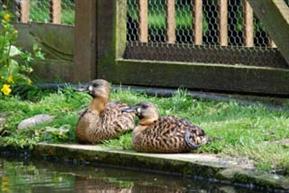African White backed Duck - Thalassornis leuconotus
The African white-backed Duck is indigenous to Eastern and Southern Africa with an additional population in Western Africa south of the Sahara and a sub-species insularis inhabits Madagascar. They can be found on lakes and have also adapted well to colonising farm dams that are common reserves of water in any areas where agriculture is undertaken. Most bodies of water in tropical Africa are carpeted in various species of water lilly Nymphaea, the leaves and seeds of these plants provide the White-backed with most of their dietary requirements. 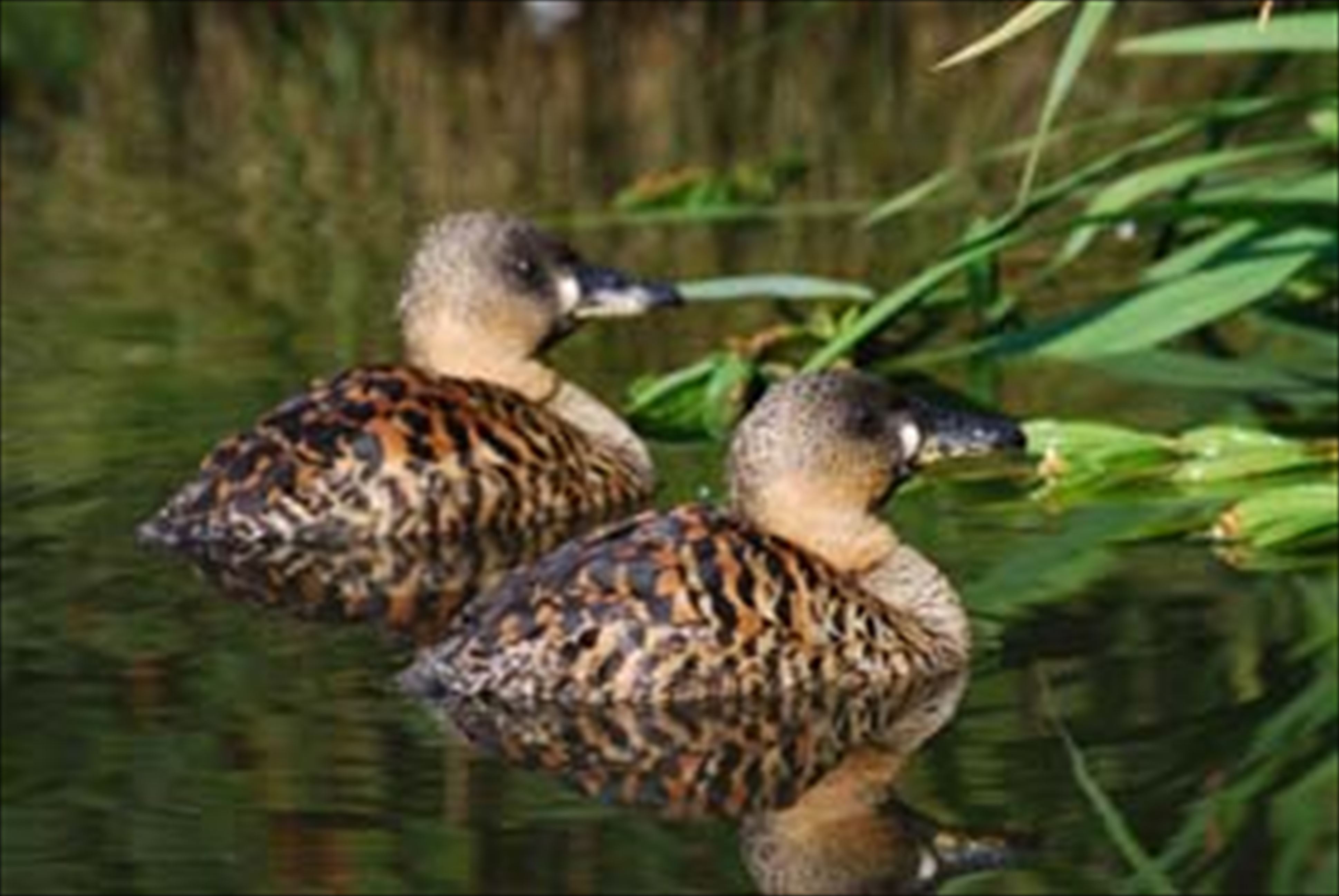 White-backed blend in exceptionally well with the water lilies, on fist glance at a suitable lake or dam they are invariably not noticed as they sit motionless among the lilly pads but if you scan the water with binoculars you will see them. They appear to make no attempt to hide or fly off relying on their ability to blend in with the Lilly pads while remaining motionless. They rarely venture on to land, even when nesting they normally construct their impressive nest in reeds and floating vegetation and they construct a dome shaped nest so that it is also concealed from Aeriel predators.
White-backed blend in exceptionally well with the water lilies, on fist glance at a suitable lake or dam they are invariably not noticed as they sit motionless among the lilly pads but if you scan the water with binoculars you will see them. They appear to make no attempt to hide or fly off relying on their ability to blend in with the Lilly pads while remaining motionless. They rarely venture on to land, even when nesting they normally construct their impressive nest in reeds and floating vegetation and they construct a dome shaped nest so that it is also concealed from Aeriel predators.
The White-backed was initially thought to be related to the stiff tails but more recent studies have concluded that they are more closely related to the Whistling ducks. There are similarities with both families, an initial observation would tend to link them to stiff tails but with longer observation it is possible to see many more similarities with the Whistling-ducks. There displays are very similar to the Whistling ducks and as with the latter both males and females share incubation duties and there is no sexual dimorphism.
White-backed have never been particularly common in captivity, they are easy to maintain and long lived and are relatively easy to get to lay in confinement but the young can be a challenge to rear. Unlike most waterfowl they are notoriously difficult to vent sex so there have probably been many instances in the past where an assumed pair are in fact birds of the same sex that is not conducive to a growing population. With such a rare species DNA sexing is advised. The diet of captive White-backed is very simple , they will take pellets as long as they are available close to the waters edge, they also eat with relish most of the floating waterfowl pellets and they absolutely adore wheat and various millets. Note that given the choice they would probably feed on nothing other than millet and they will thrive but it has been suggested that this diet makes them fat and may cause infertility.
White-backed are easy to maintain on a large piece of natural water but also work very well on relatively small artificial ponds. It is perhaps the smaller enclosures that provide observation at close quarters that allows the character of the white-backed to really be appreciated. The patterns of their plumage are very appealing at close quarters and they are also surprising vocal with their range of interesting whistles and should you surprise them or encroach to closely they will also hiss quite loudly as they indignantly give ground. Another trait of the species is to loaf either on the water or at the waters edge with their very large feet resting on their backs which is certainly surprising when you first observe it. As their name suggests they do in fact have a white back but this is rarely observed except immediately post copulation when both birds will rapidly tread water and raise their wings in a similar fashion to the whistling ducks and at this time it is possible to observe why they were called White-backed.
Provided there is cover close to the water White-backed will happily construct their own nest. This is an impressive construction completed by both members of the pair. If cover is not available they may be tempted to use an open fronted ground box but I have not had experience of this so am not able to confirm. Once nest construction has started it is not difficult to locate the nest because if you encroach to closely the pair will rush to the site and defend with much hissing and aggressive threat postures. Once the nest is complete eggs can be expected and these really are quite something, they are large, quite rounded and the most beautifull chocolate brown. The clutch is not large and five to eight eggs can be expected, the incubation period is difficult to establish because the pair will appear to start incubation before the clutch is complete. Various authorities have suggested that it could be as much as 33 days but I would suggest that it is significantly less than this.
African White backed Duck
If artificial incubation is to be undertaken care must e taken with humidity so observation of the air space is advised to ensure that the eggs do not dry out to much and from internal pip I would suggest that a very high level of humidity is required. Once hatched the ducklings are adorable being various shades of bright brown with some black markings. This is a species that requires access to water from day one and while it is important to try and get them eating dry crumbs at the earliest opportunity it is usually easier to initially get them eating from the water surface. They are a challenge to rear and there are certainly highs and lows but with perseverance it is possible and very rewarding.
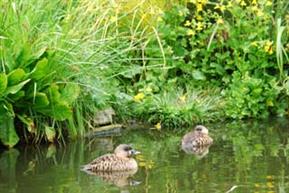
White backed prefer dense cover close to the edge of the water where they will construct their own nest that can be quite an elaborate construction with a domed top. The above picture shows suitable nesting cover.
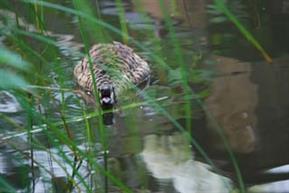
White backed are very defensive of their nest site, typical threat posture above.
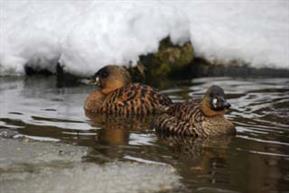
White backed do not enjoy hard weather but provided some open water can be maintained they can cope with very low temperatures.






